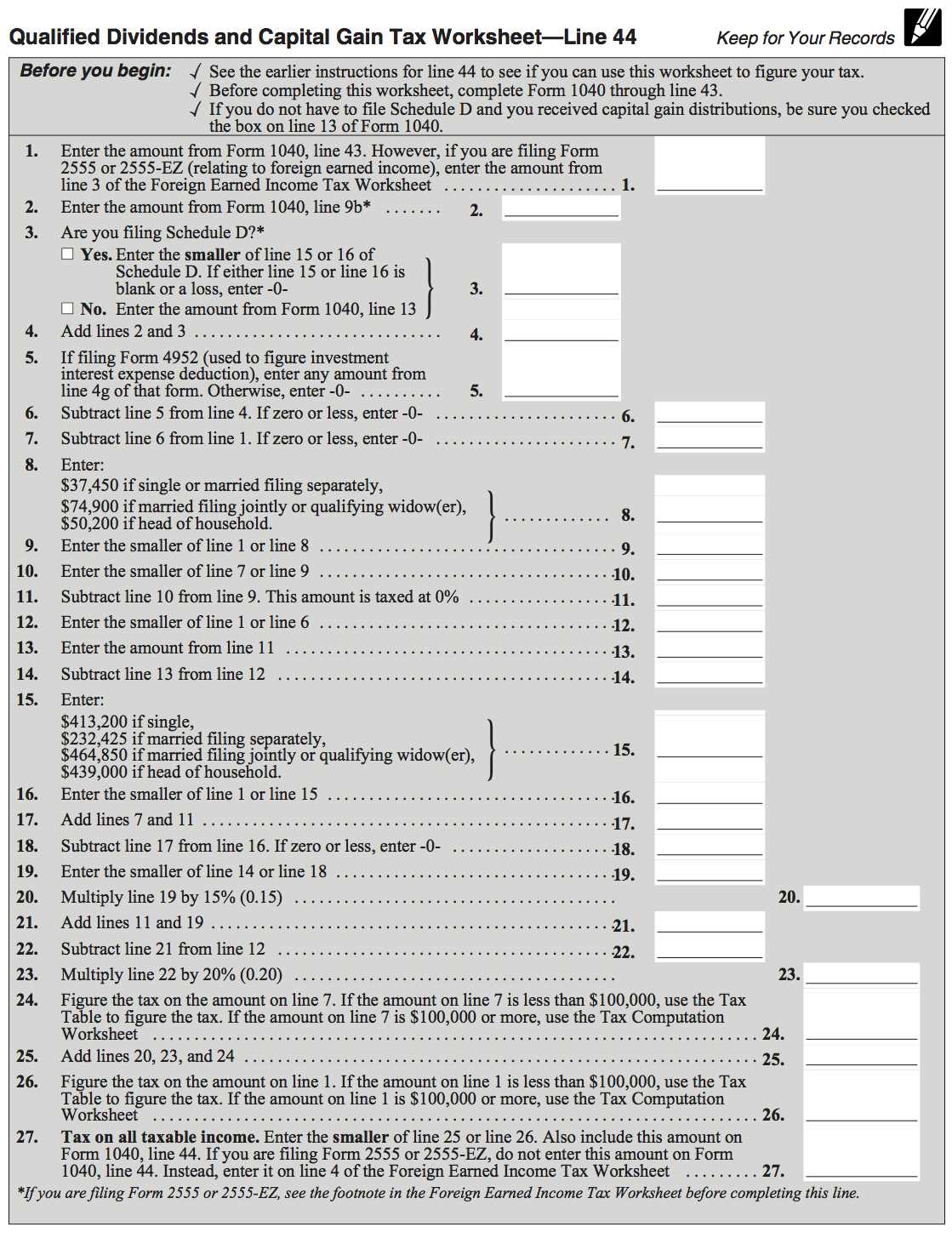line = [None] * 28
line[ 0] = 0.00 # unused
line[ 1] = XXXX # 1040 line 43
line[ 2] = XXXX # 1040 line 9b
line[ 3] = XXXX # 1040 line 13
line[ 4] = line[ 2] + line[ 3]
line[ 5] = XXXX # 4952 line 4g
line[ 6] = line[ 4] - line[ 5]
line[ 7] = line[ 1] - line[ 6]
line[ 8] = XXXX # from worksheet
line[ 9] = min(line[ 1],line[ 8])
line[10] = min(line[ 7],line[ 9])
line[11] = line[9] - line[10]
line[12] = min(line[ 1],line[ 6])
line[13] = line[11]
line[14] = line[12] - line[13]
line[15] = XXXX # from worksheet
line[16] = min(line[ 1],line[15])
line[17] = line[ 7] + line[11]
line[18] = line[16] - line[17]
line[19] = min(line[14],line[18])
line[20] = 0.15 * line[19]
line[21] = line[11] + line[19]
line[22] = line[12] - line[21]
line[23] = 0.20 * line[22]
line[24] = XXXX # from tax table
line[25] = line[20] + line[23] + line[24]
line[26] = XXXX # from tax table
line[27] = min(line[25],line[26])
i = 0
for l in line:
print('{:>2} {:10.2f}'.format(i, l))
i += 1
This is a quick-and-dirty first cut, just good enough for what I
needed this weekend. It requires some user input, as I have to
manually enter values from other forms, from the case statements,
and from the tax table. Several of these steps could be automated,
with only a bit more effort or a couple of 
